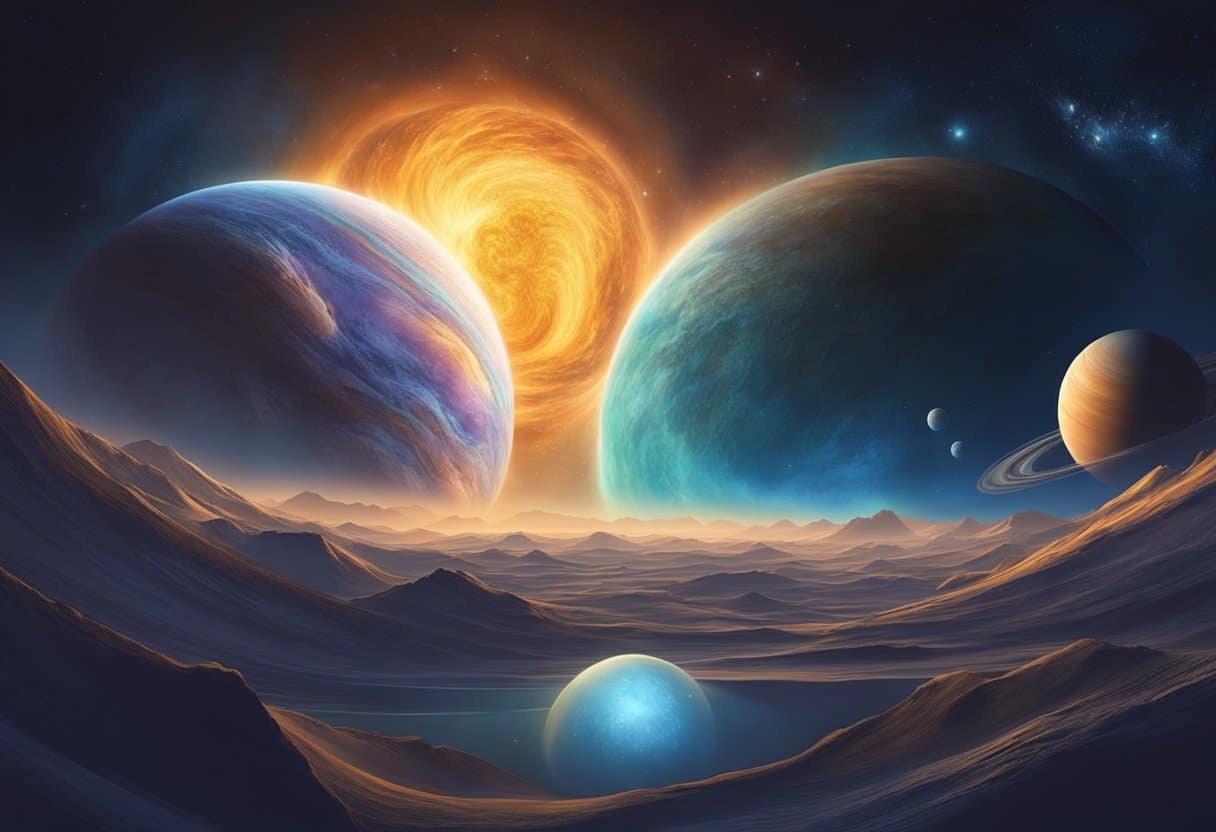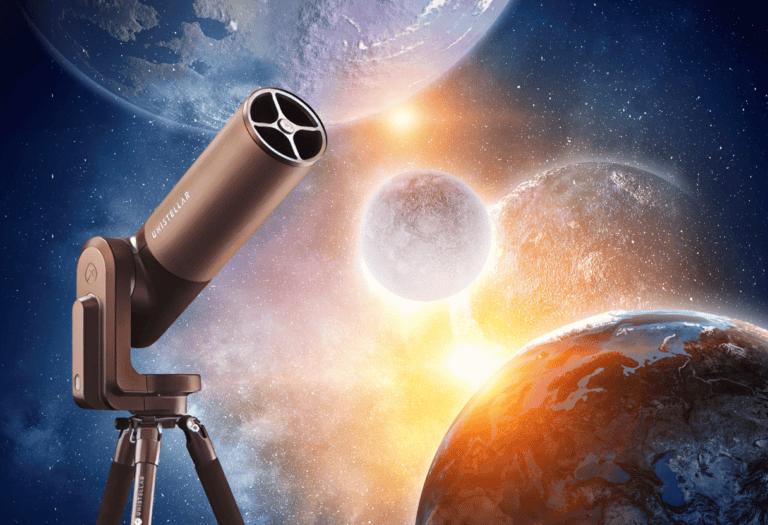The outer planets of our solar system, also known as the gas giants, are comprised of Jupiter, Saturn, Uranus, and Neptune.
Unlike the terrestrial planets, these planets have vast atmospheres with a composition that includes hydrogen and helium, and they lack a well-defined solid surface. Their significant mass results in a strong gravitational pull, influencing the orbits of nearby objects and playing a crucial role in the solar system’s dynamics.
Understanding the outer planets involves exploring their atmospheric dynamics, magnetic fields, and unique satellite systems. With atmospheres that boast complex weather patterns and magnetospheres extending far into space, the gas giants serve as natural laboratories for studying planetary science.
The exploration of these distant worlds has been enriched by missions such as Voyager and more recent endeavors that have provided insight into their composition, revealing information about the solar system’s formation and evolution.
The phrase “Giants of the Solar System” aptly describes the outer planets, Jupiter, Saturn, Uranus, and Neptune, known for their massive gas compositions and lack of solid surfaces.
Characteristics of Outer Planets
Your understanding of the outer planets expands significantly when you consider their distinct characteristics. These massive celestial bodies stand apart from their terrestrial counterparts, bearing unique features and compositions.
Gas Giants Versus Ice Giants
The outer planets are generally categorized into Gas Giants (Jupiter and Saturn) and Ice Giants (Uranus and Neptune). Gas giants have a higher mass and are predominantly composed of hydrogen and helium. In contrast, ice giants have a considerable proportion of water, ammonia, and methane ices. These differences affect each planet’s density, color, and thermal characteristics.
Atmospheric Composition
The atmospheres of the outer planets are rich and complex. Jupiter and Saturn are known for their deep hydrogen-helio atmospheres, with layers of clouds and storms, the most famous being Jupiter’s Great Red Spot. In comparison, Uranus and Neptune showcase atmospheres where methane imparts a distinctive blue hue to their appearance.
Magnetic Fields and Rings
Each of the outer planets is encircled by planetary rings, though Saturn’s are the most extensive and visible from Earth. Their magnetic fields are of great interest; Jupiter’s magnetic field is the strongest in the solar system, extending millions of kilometers into space. The magnetic fields of these planets are thought to arise from dynamo processes within their metallic hydrogen layers or, in the case of ice giants, potentially from movements within their icy mantles, as detailed in studies like those on the magnetic fields of the outer planets.
Comparative Overview
When exploring the outer planets of our solar system, your understanding of their characteristics is enhanced by examining their sizes, masses, and orbital dynamics. Specific details about these giants reveal their distinctness from the inner terrestrial planets.
Sizes and Masses of Outer Planets
The giant planets—Jupiter, Saturn, Uranus, and Neptune—are substantially larger and more massive than their inner solar system counterparts. Jupiter and Saturn are the largest in both size and mass, classified as gas giants, with Jupiter being the most massive at approximately 318 times the mass of Earth. Uranus and Neptune, often referred to as ice giants, are less massive yet still significantly larger than Earth. Despite its smaller size, Neptune has a greater mass than Uranus. This section provides a clear picture of these planets’ vastness and heft.
- Jupiter: Diameter of about 139,820 km; Mass is 1.898 x 10^27 kg.
- Saturn: Diameter of about 116,460 km; Mass is 5.683 x 10^26 kg.
- Uranus: Diameter of about 50,724 km; Mass is 8.681 x 10^25 kg.
- Neptune: Diameter about 49,244 km; Mass is 1.024 x 10^26 kg.
Orbital Distances and Periods
Your perspective on the outer planets includes their position and movement through our solar system. Each planet orbits at different distances from the Sun, with orbital periods that extend much longer than those of the inner planets.
Orbital Distances (in astronomical units, AU, where 1 AU is the average distance from Earth to the Sun):
- Jupiter: 5.2 AU
- Saturn: 9.58 AU
- Uranus: 19.22 AU
- Neptune: 30.05 AU
Orbital Periods (in Earth years):
- Jupiter: 11.86 years
- Saturn: 29.46 years
- Uranus: 84 years
- Neptune: 164.8 years
This data gives you insight into the considerable distances these planets are from both the Sun and Earth, as well as the lengthy durations needed to complete a single orbit.
Formation and Evolution
When exploring the outer planets, understanding their formation and evolution is vital. These processes are complex and illuminate why these planets differ significantly from their inner counterparts.
Accretion and Formation Theories
The outer planets—Jupiter, Saturn, Uranus, and Neptune—formed through the process of accretion, where a solid core is built up by the collection of ice and rock in a protoplanetary disk. This occurred approximately 4.5 billion years ago. Once these cores reached sufficient mass, they began to gather thick atmospheres of hydrogen and helium. For a more detailed analysis on this topic, you can refer to Global models of planet formation and evolution.
Migration and Its Effects
Migration refers to the movement of planets from their original formation locations to their current orbits.
- Inward Migration: This is when a planet moves closer to the star it orbits. The migration of outer planets toward the Sun could have significant effects on the architecture of the entire planetary system.
- Outward Migration: Some planets may move further out from their star. The gas giants of our solar system are thought to have migrated outward, shaping the final layout of planets and asteroid belts.
To delve further into how these movements can influence planetary systems, look at the research on Characterization of exoplanets from their formation.
Exploration Milestones
In the realm of space exploration, the journey to the outer planets has been marked by several key missions. Your understanding of these milestones is pivotal to grasp the progression and ambitions of interplanetary science.
Historical Space Missions
Voyager missions stand as monumental achievements in your exploration of the outer solar system. Launched in the late 1970s, Voyager 1 and Voyager 2 provided humanity with the first close-up images and invaluable data about Jupiter, Saturn, Uranus, and Neptune. Their grand tour has expanded your knowledge on the outer planets significantly.
- Pioneer 10 and 11: Preceding the Voyagers, these spacecraft were your first envoys to the outer solar system, offering initial insights.
- Galileo: Focused on Jupiter, this orbiter-styled mission delved deeper into the gas giant’s atmosphere and studied its moons extensively.
To the outer solar system and beyond, these craft have ventured where none had gone before.
Current and Future Explorations
Your examination of the outer planets continues to evolve with missions like Juno, which is currently orbiting Jupiter. This probe is designed to uncover the hidden secrets beneath Jupiter’s dense cloud cover, enhancing your understanding of the giant planet’s atmosphere and magnetic fields.
Looking ahead:
- JUICE (JUpiter ICy moons Explorer): Slated for launch in the 2020s to investigate Jupiter’s icy moons.
- Dragonfly: NASA’s mission to Titan, will explore its chemistry and habitability.
These endeavors represent stepping stones to more complex missions including potential sample return and unmanned missions to explore the outer planets in even greater detail. The future promises to unveil the mysteries of the solar system with each new venture.
Impact on Solar System Dynamics
The outer planets exert a significant influence on the dynamics of the solar system through their gravitational force and by affecting the paths of comets.
Gravitational Influence
The outer planets are the heavyweights in our celestial neighborhood, each possessing a mass great enough to shape the movements of bodies around them. Your system’s architecture is largely sculpted by these planets, as they can alter the orbits of asteroids and dictate the formation of gaps within the asteroid belt.
Role in Cometary Orbits
Comets, particularly those in the far-reaching Oort Cloud, are heavily influenced by the gravity of the outer planets. When comets from this distant region venture into the inner solar system, it is often because they have had their trajectories tweaked by the gravitational perturbations of planets like Jupiter and Saturn. Moreover, the presence of Neptune and Uranus can shepherd these icy travelers, directing their paths and potentially contributing to cometary showers that can affect Earth.
Frequently Asked Questions
When exploring the vastness of our solar system, you may have questions about the distinctive features of the outer planets. This section provides answers to some common queries.
What are the distinguishing characteristics of the outer planets?
The outer planets, Jupiter, Saturn, Uranus, and Neptune, are known for being gas giants except for Neptune which is sometimes called an ice giant. These planets have thick atmospheric layers composed primarily of hydrogen and helium, and they lack a well-defined solid surface.
How do the sizes of the outer planets compare to those of the inner planets?
The outer planets are substantially larger and more massive than the inner planets. For example, Jupiter, the largest planet in our solar system, could contain all the other planets within its volume due to its immense size.
What common traits do Earth and Mars have that differ from the outer planets?
Earth and Mars are solid, rocky planets with surfaces that can support various landforms such as mountains, valleys, and craters. These features are unlike the outer planets, which do not have solid surfaces.
Which outer planets have a significant number of moons, and what are the implications of these findings?
Jupiter and Saturn have a significant number of moons. The presence of many moons, including potential ocean-bearing moons like Europa around Jupiter, suggests complex gravitational interactions and potential habitats for life.
How do the atmospheres of the outer planets differ from those of the inner planets?
The atmospheres of the outer planets are thicker, deeper, and mainly composed of light gases such as hydrogen and helium. In contrast, the inner planets have thinner atmospheres with heavier gases like carbon dioxide and nitrogen.
In what ways do the compositions and physical states of the outer planets’ surfaces contrast with those of the terrestrial planets?
As the outer planets are largely gaseous, they lack solid surfaces, which is a stark contrast to terrestrial planets that have solid, rocky exteriors. The ‘surfaces’ of outer planets are actually clouds tops in their dense atmospheres.







